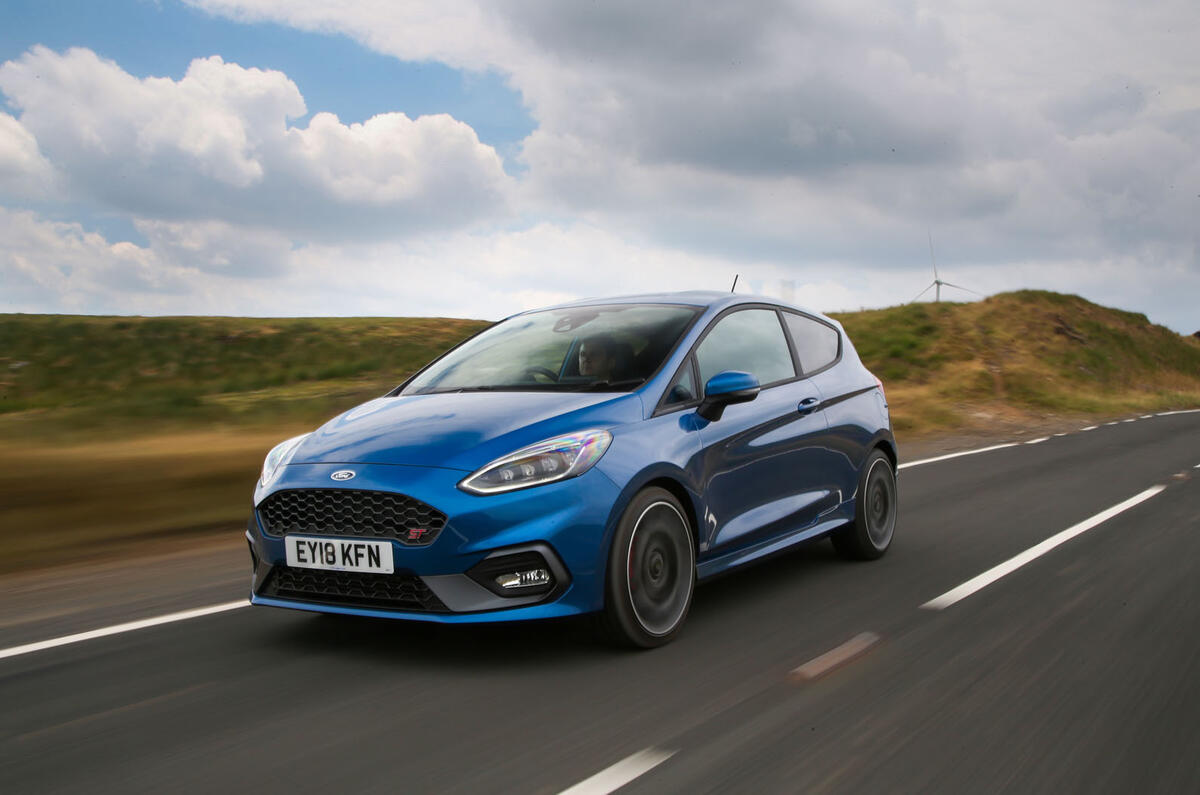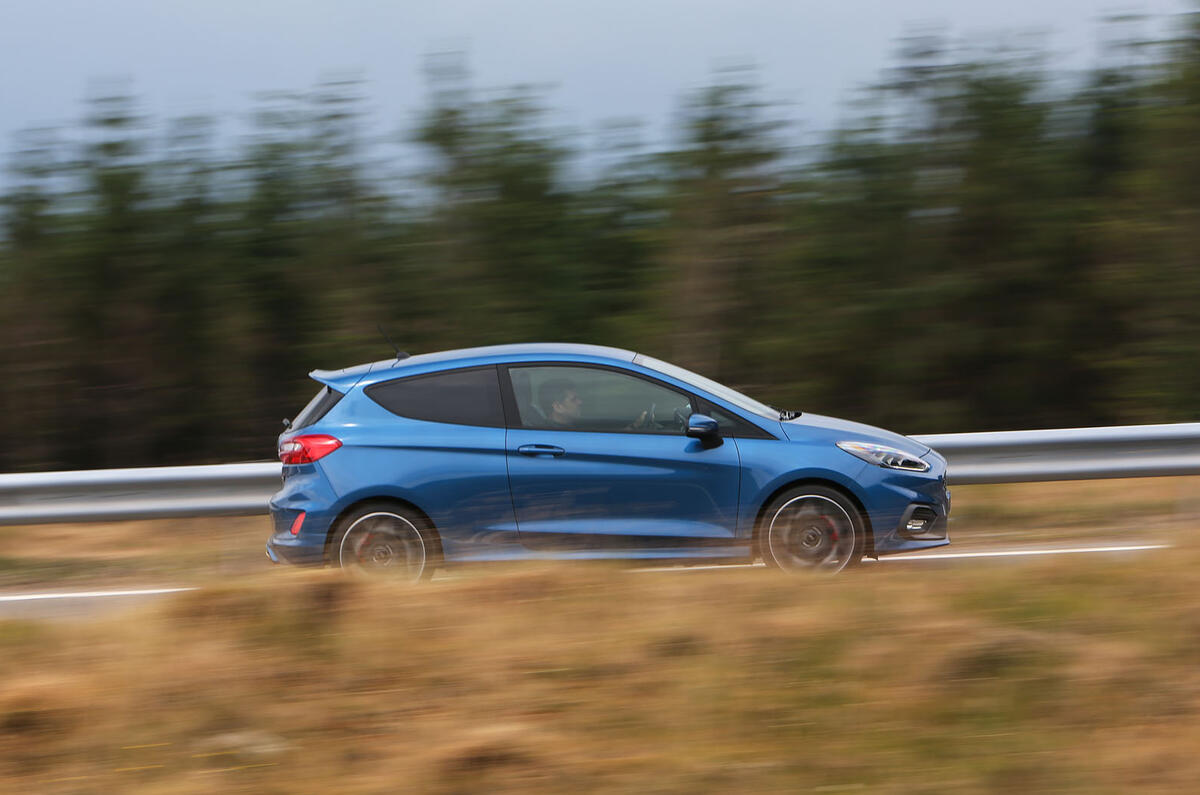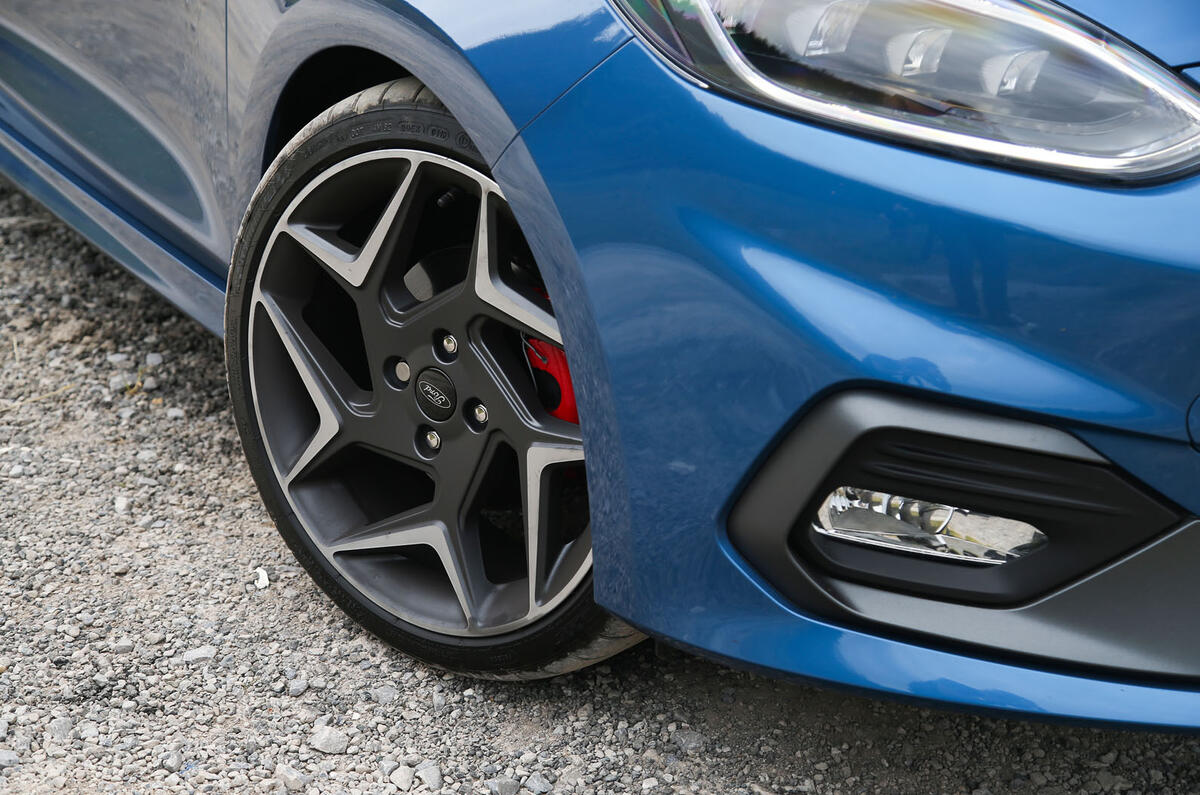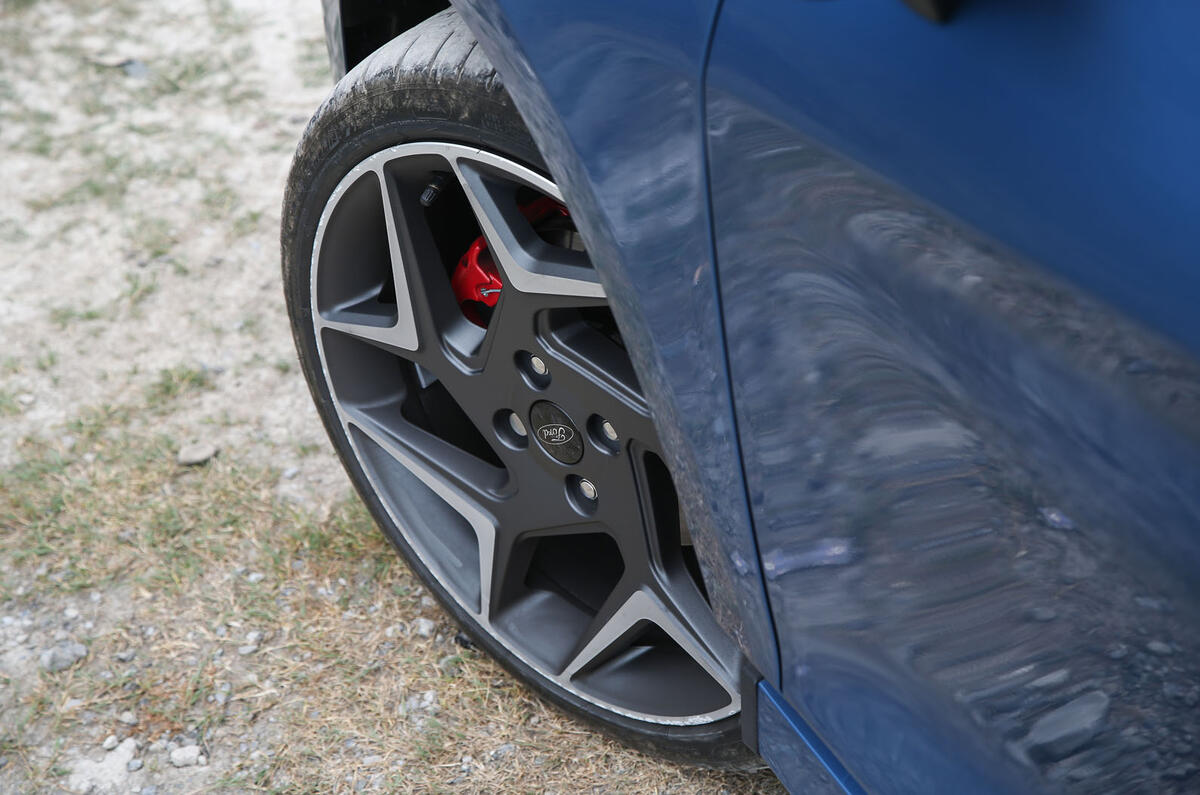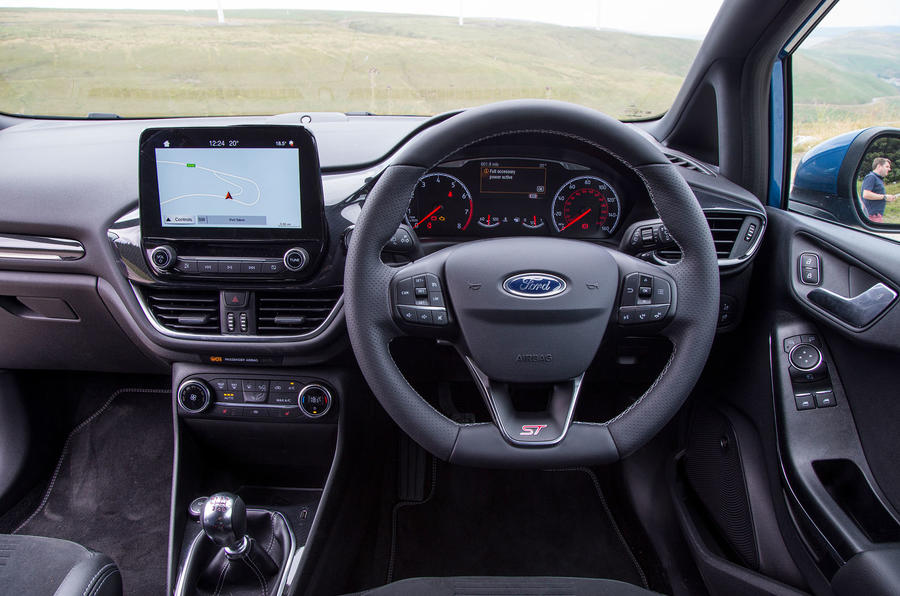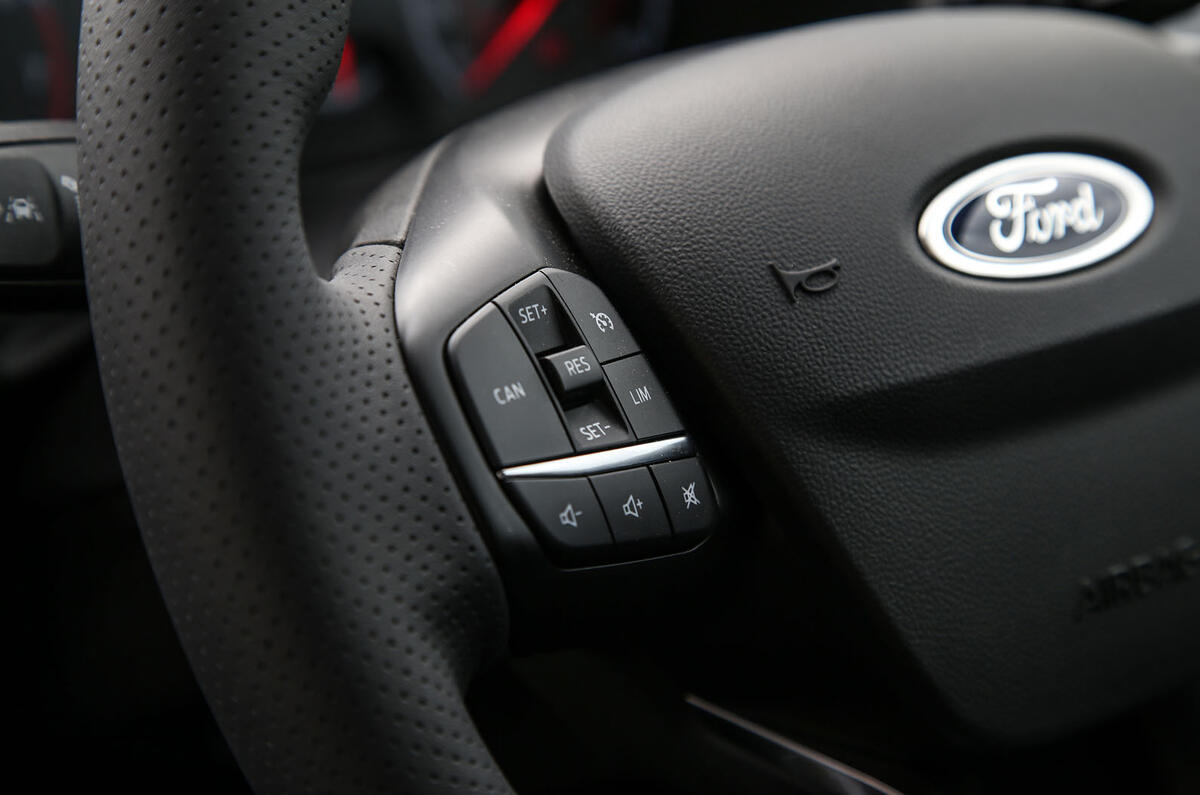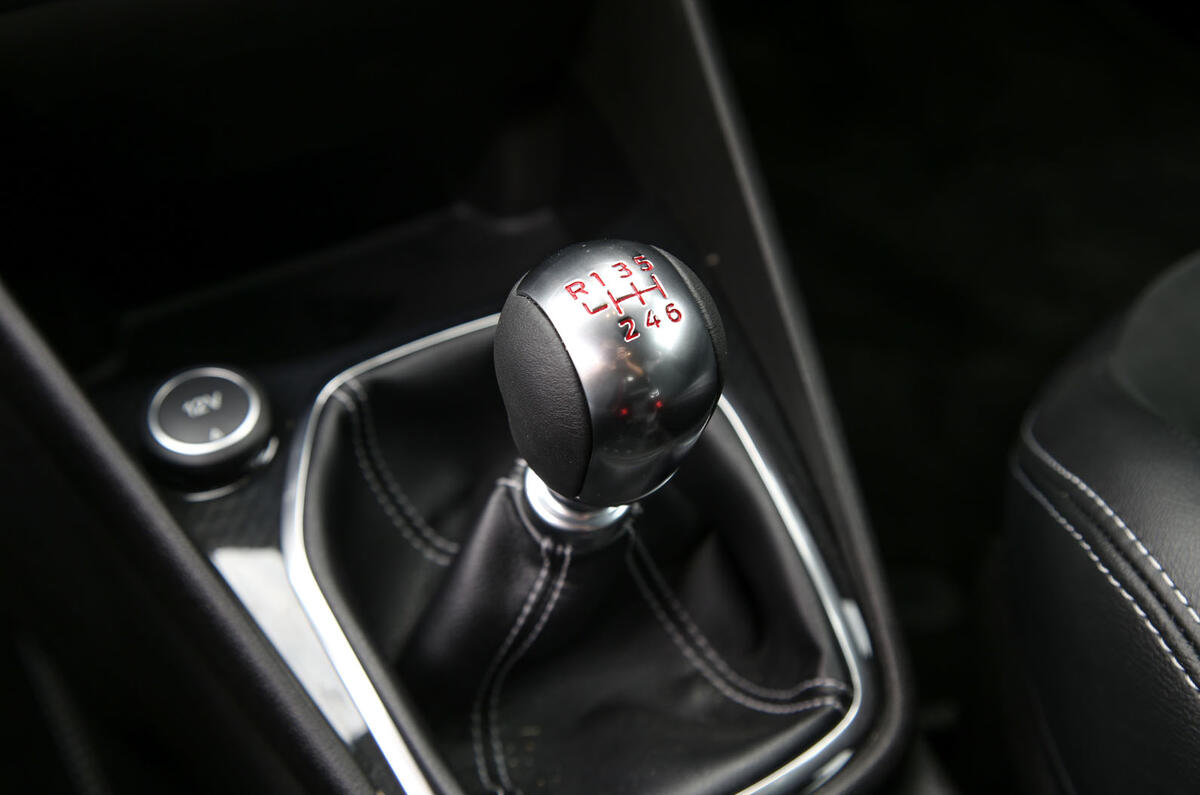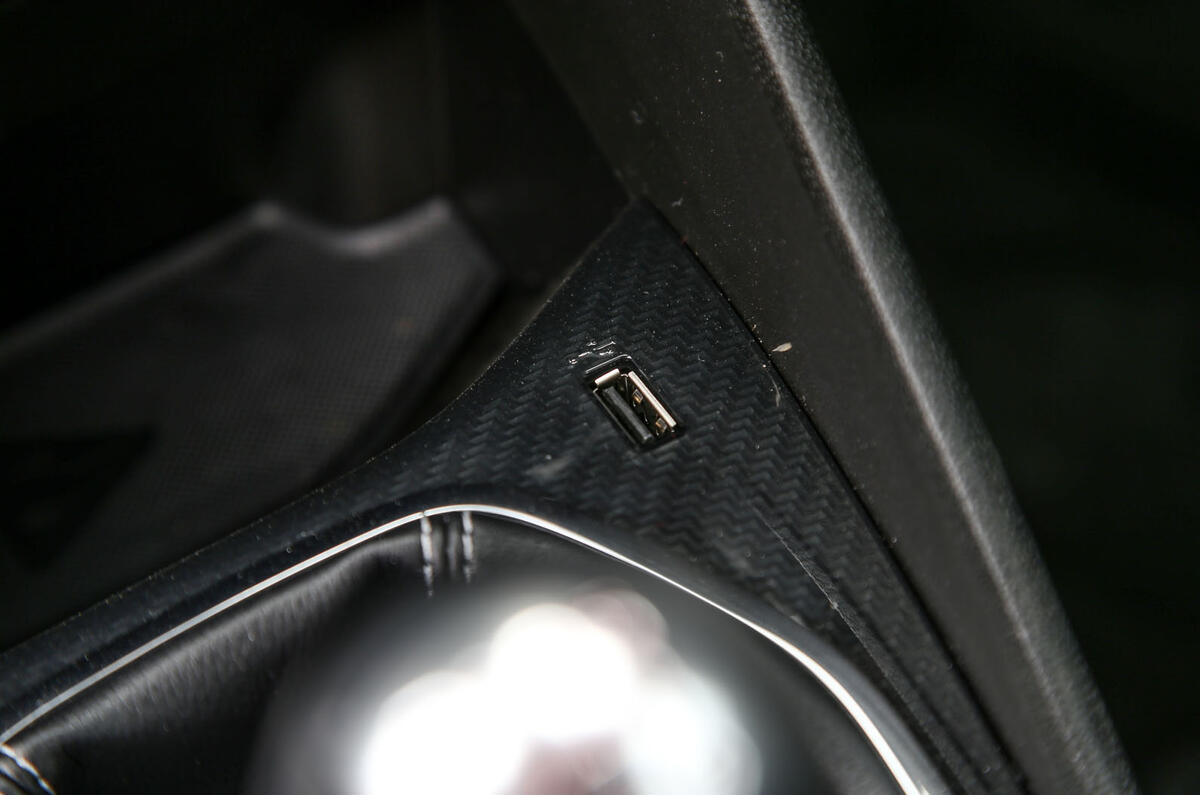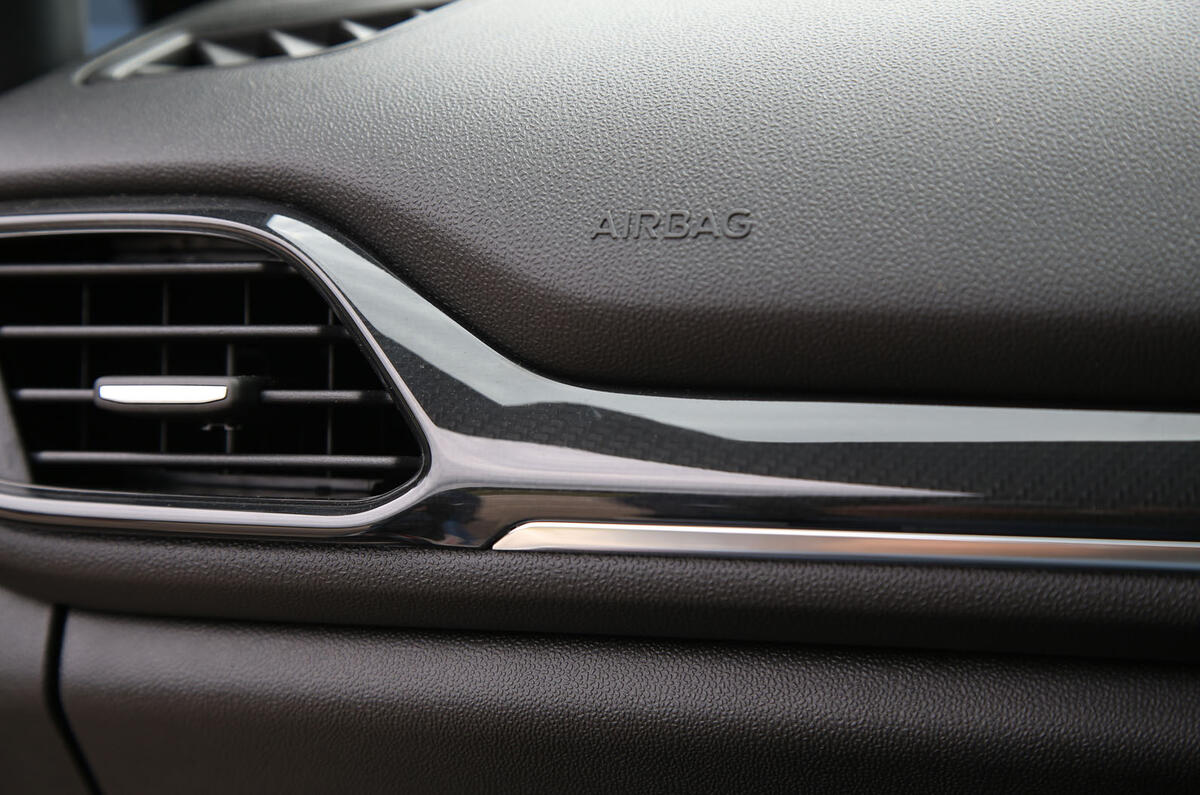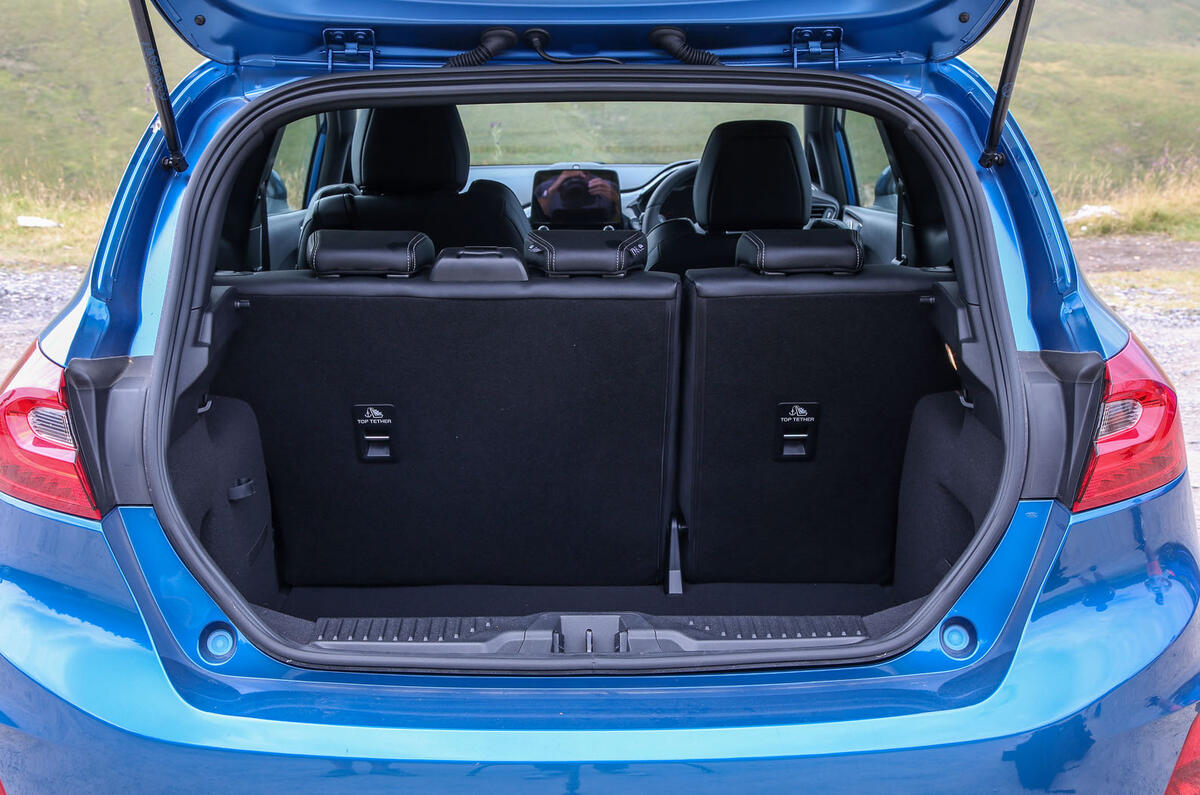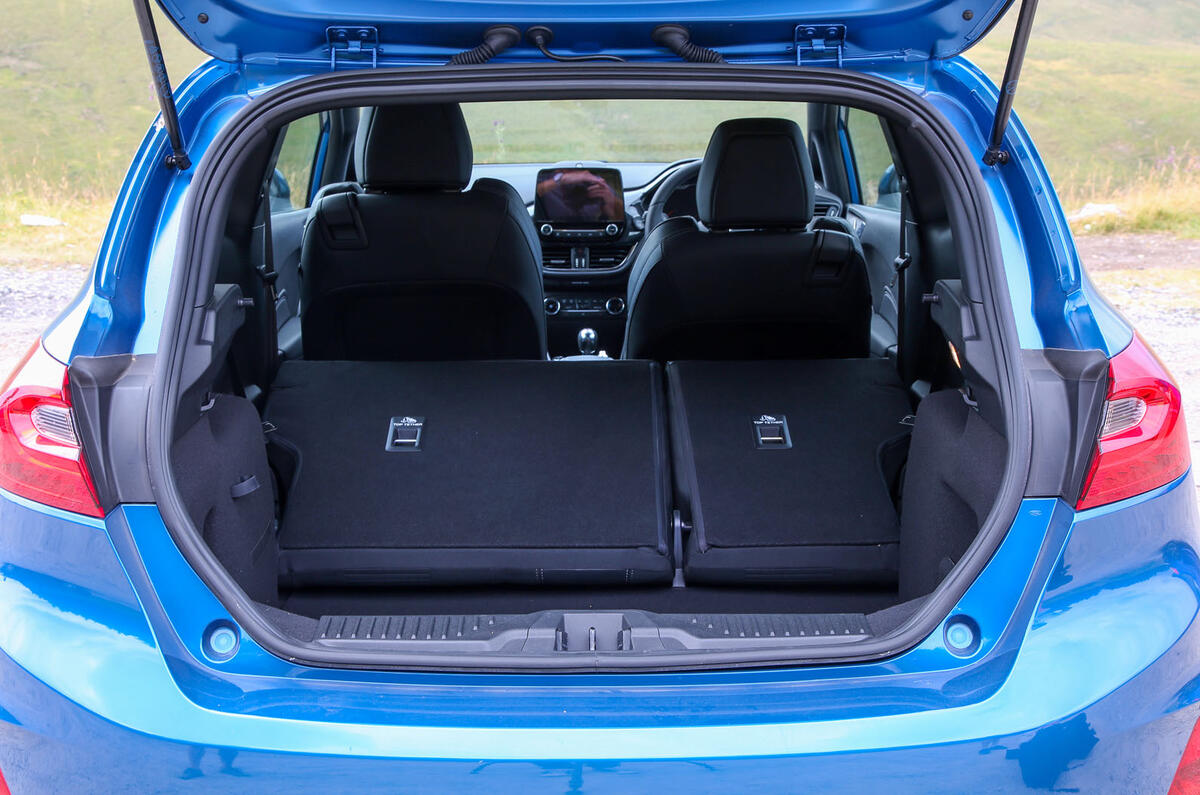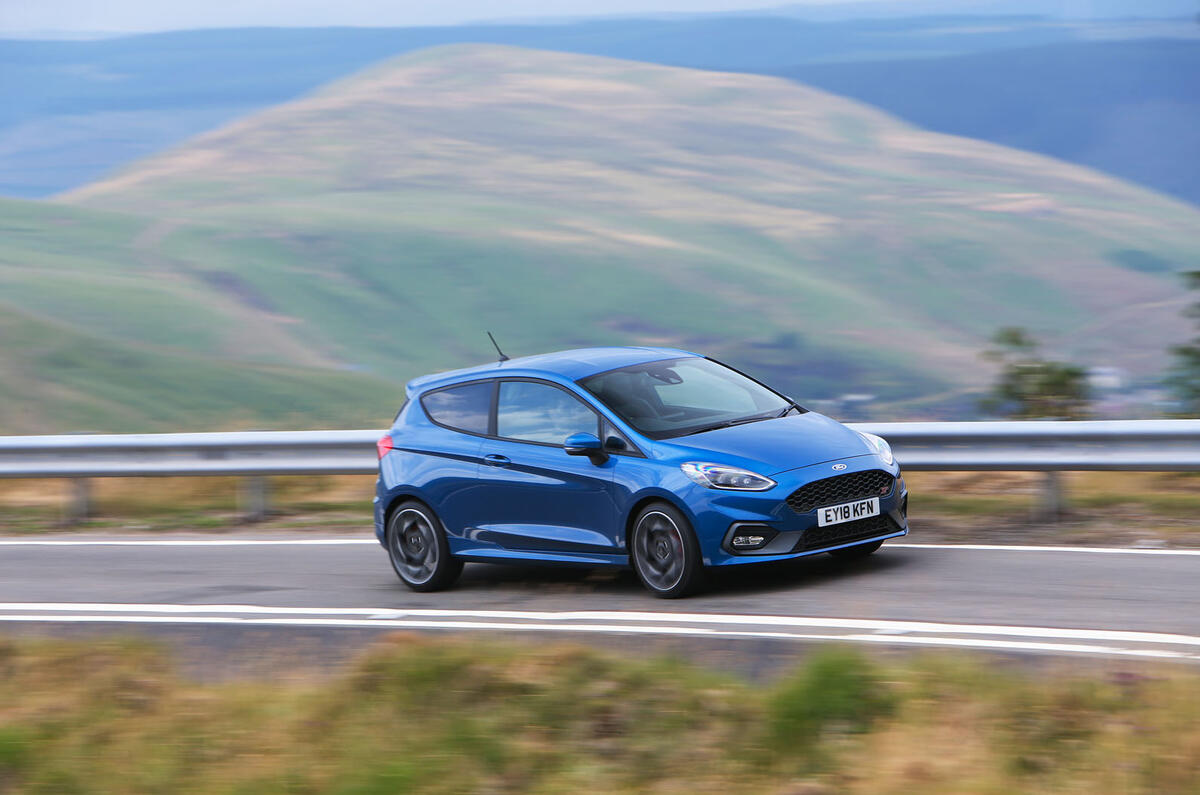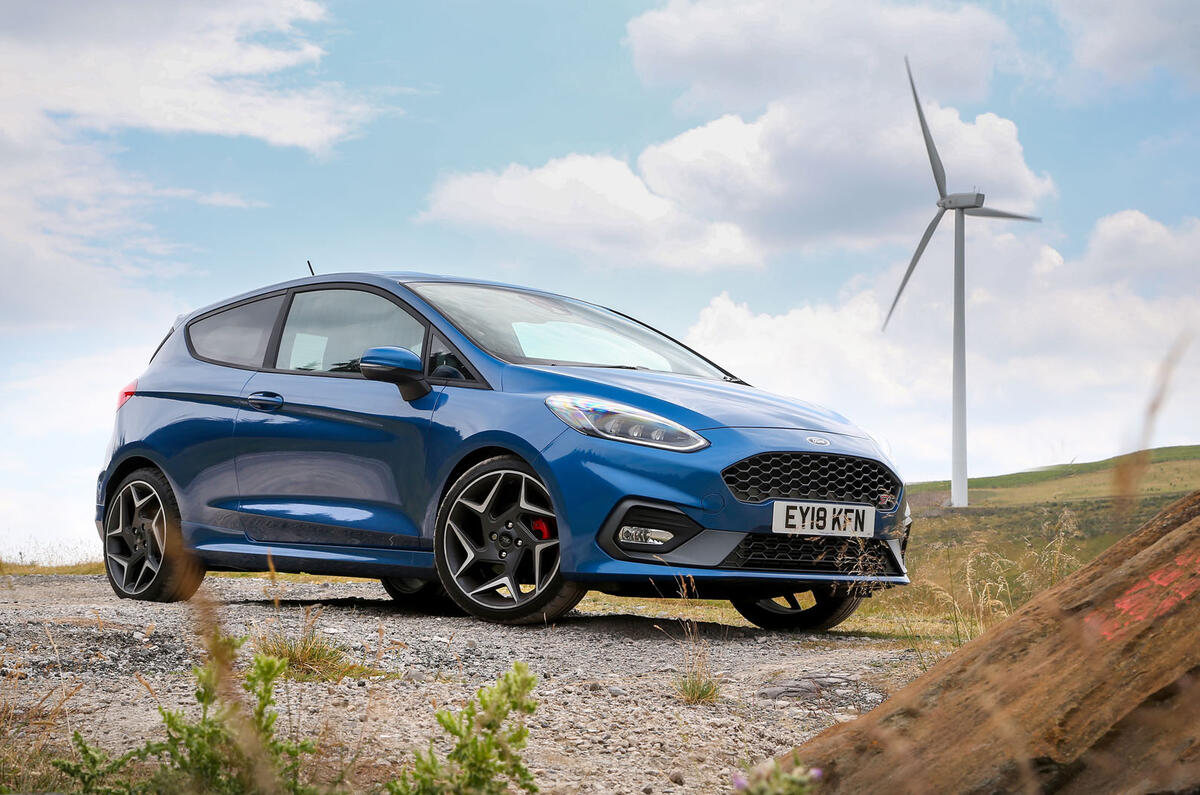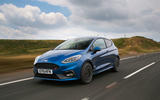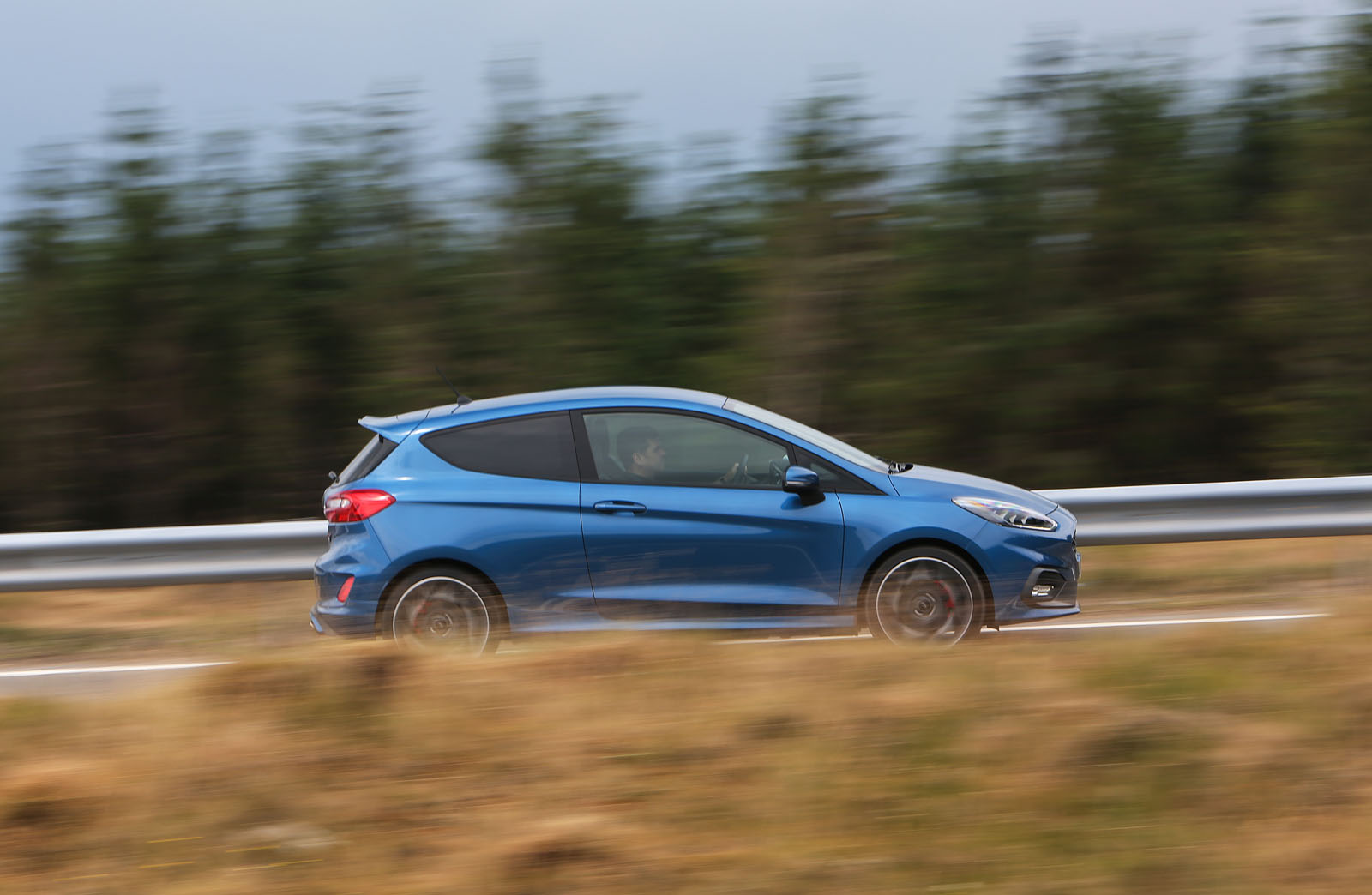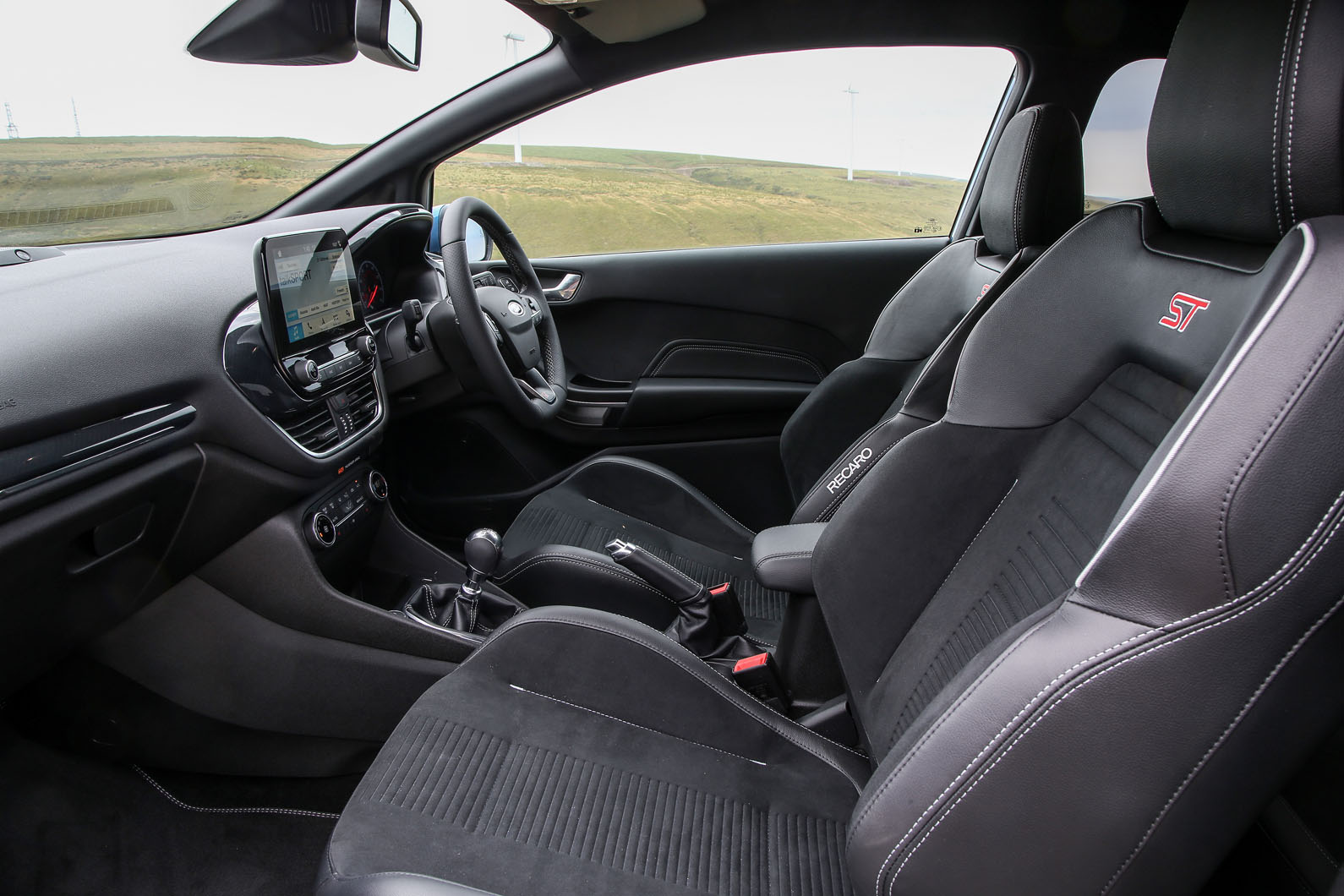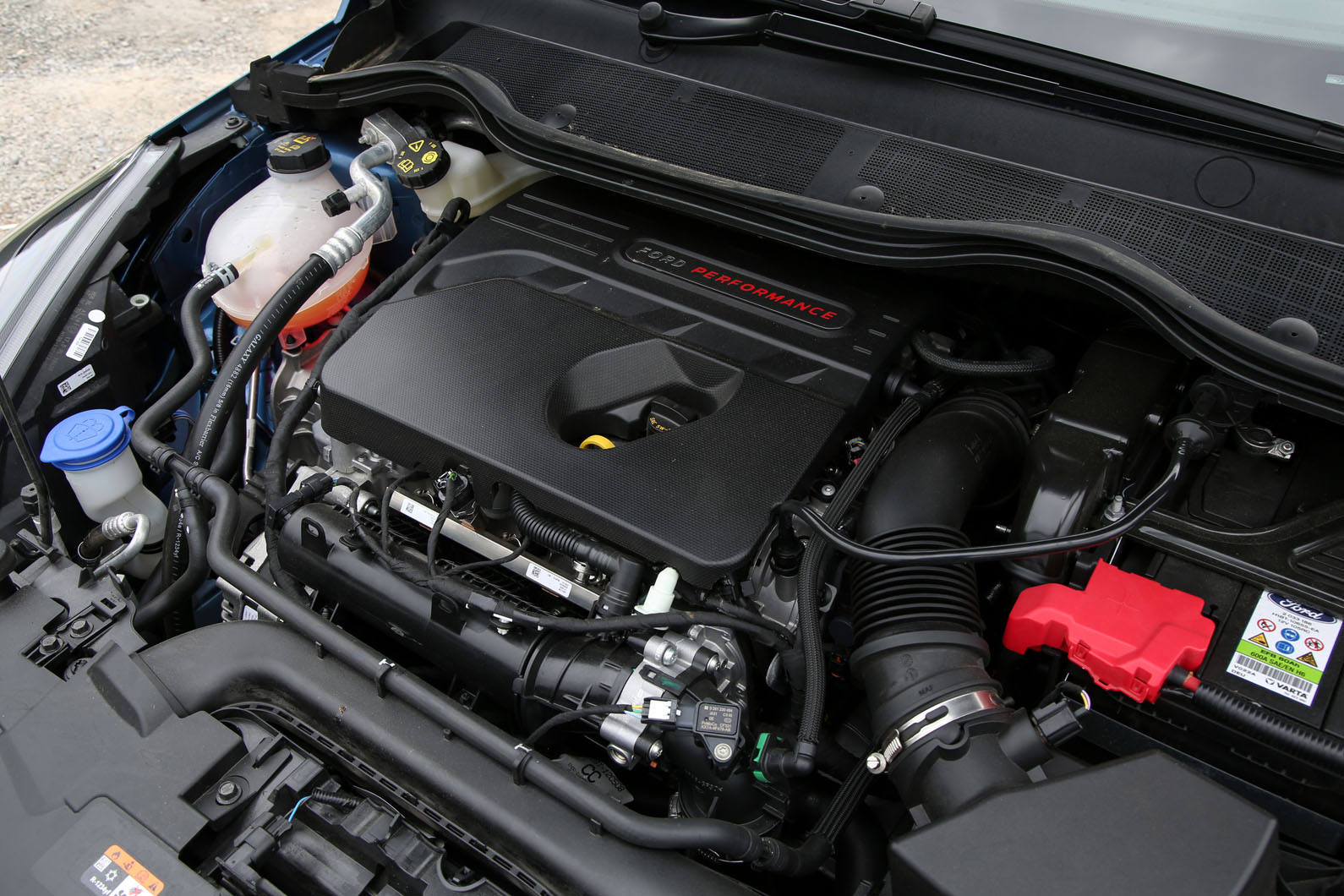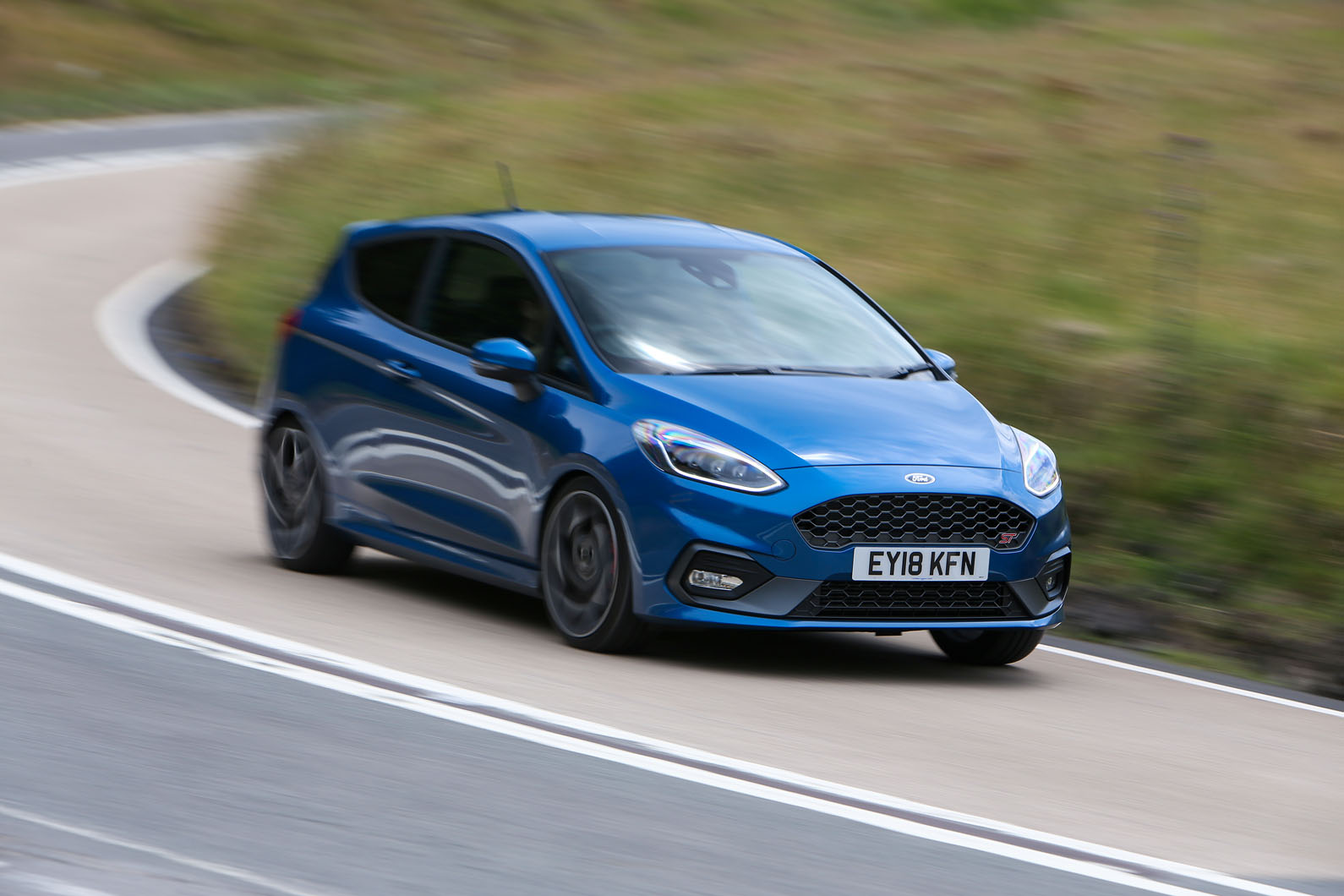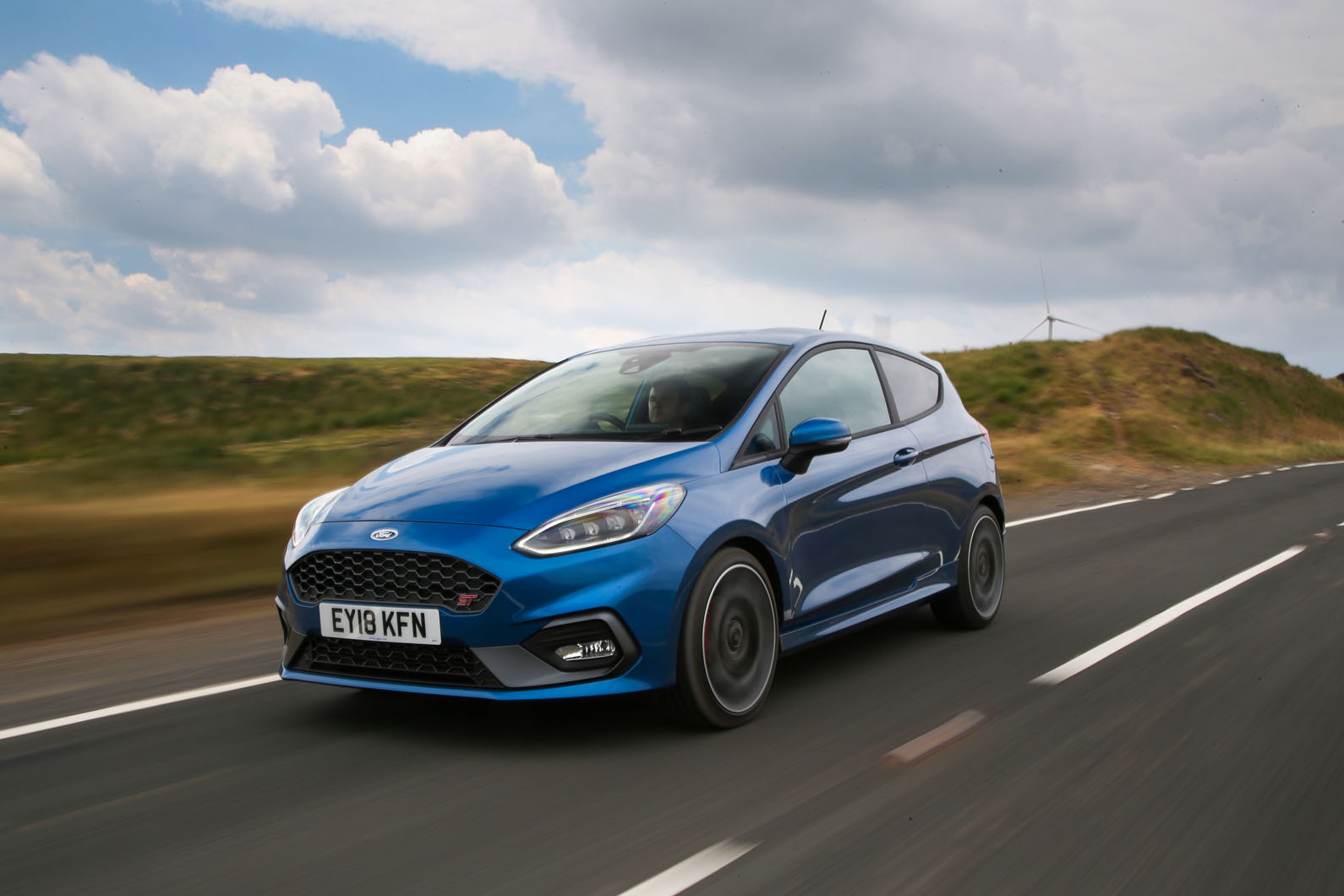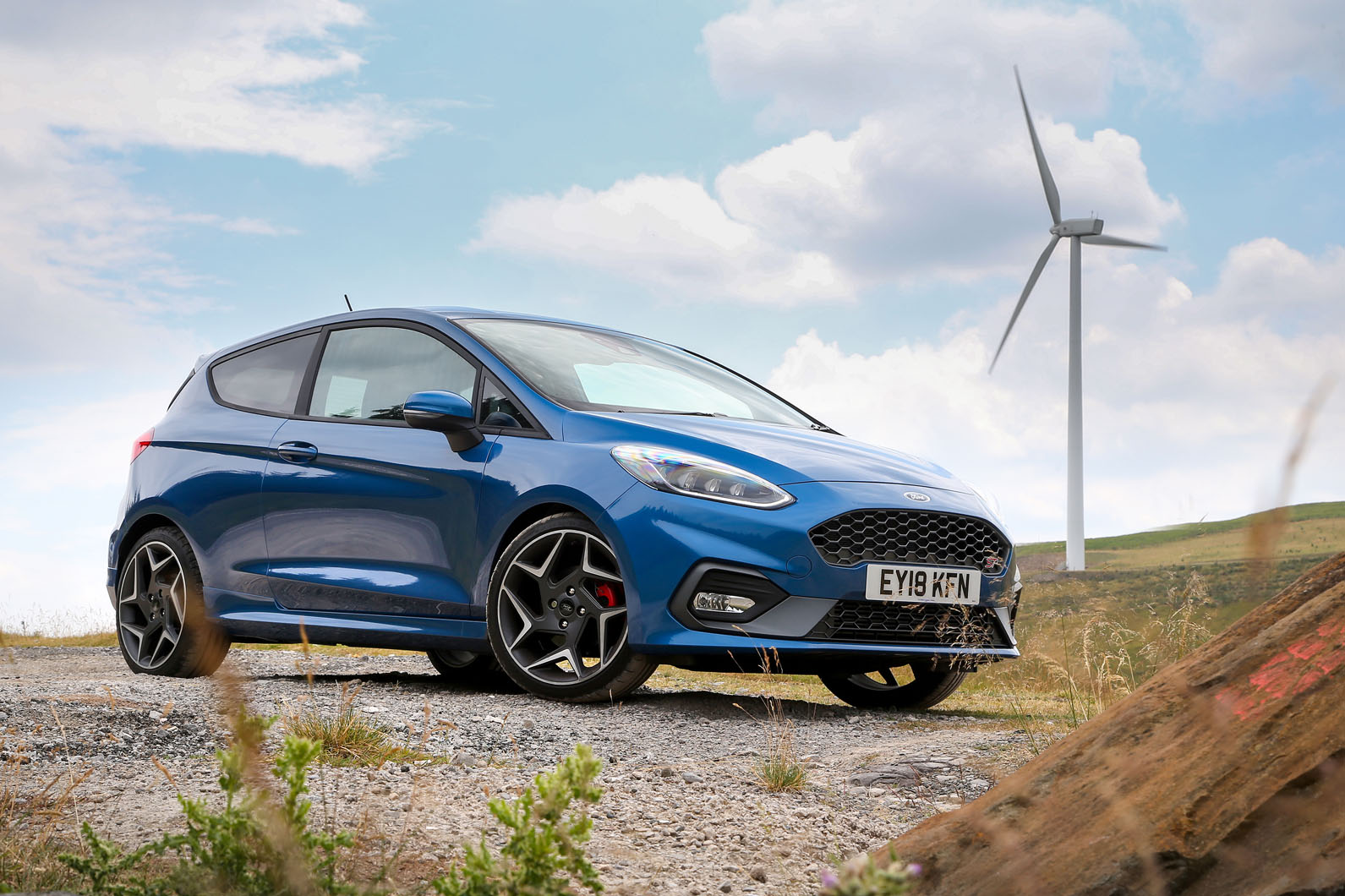The bolsters of our Fiesta ST-3 test car’s part-leather sports seats were quite pronounced, and easily provided the kind of lateral support you’d want from the driver’s seat of your hot hatchback. If you opt for a lower trim level (ST-1 or ST-2), you lose the leather and Alcantara upholstery, but the cloth seats you get instead are the same shape.
You sit fairly high and bent-legged at the ST’s controls, and longer-legged drivers might feel like they would prefer another inch or two of maximum leg room. Likewise, there’s a chance you might notice the very slight offset of the car’s steering column that we measured: a 10mm right-sided offset of the wheel that obliges you to perch more of your backside on the outboard cushion bolster than you might choose to in order to perfectly align your torso with the steering boss.
The instruments are simple, readable analogue dials, visible through the orbit of a sensibly proportioned steering wheel with a squidgy but not overly chubby rim. The spokes of that wheel are busy with buttons for the car’s cruise control, trip computer and infotainment systems – while those for the car’s engine stop-start system, electronic stability control system and selected drive mode are on a console that’s a bit tricky to see, on the far side of the manual handbrake lever. A reorganisation that made the latter more accessible, at the expense of some of the former, would have been welcome.
The car’s freestanding 8.0in touchscreen infotainment system is respectable for its usability and its features, although it doesn’t give the Fiesta quite the sense of technical sophistication of doesn’t quite match the latest one or two of its rivals.
You have to climb all the way up to our test vehicle’s ST-3 specification on the Fiesta ST’s showroom ladder to get a car equipped with a factory sat-nav system. Entry-level cars get a 6.5in touchscreen infotainment system and mid-level ST-2s get an 8.0in screen. But when both lower-end systems include Apple CarPlay and Android Auto smartphone mirroring as standard — and particularly since Ford’s navigation system isn’t all that great — you can easily do without.
The SYNC3 system can be voice-controlled, and works fairly well when given clear instructions. Finding your way in and out of CarPlay mode can be tricky, with no ‘home’ button on the row of shortcuts just underneath the main screen, but that apart, usability is decent.
Our test car was fitted with Ford’s optional B&O Play premium audio system (£350). It increases the car’s speaker count from six to ten. The sound quality is impressive enough but the system wouldn’t be high on the list of things we would spend extra on.
The car’s standard on perceived quality surpasses adequacy without going too far past. In this value-driven part of the market, you don’t expect a cabin free of hard mouldings or a spread of exotic materials but, even by supermini standards, the Fiesta ST’s interior is pretty workaday.
Practicality is competitive without being outstanding; both three and five-door versions are available, though the car Volkswagen Polo GTI on second-row passenger or boot space.


